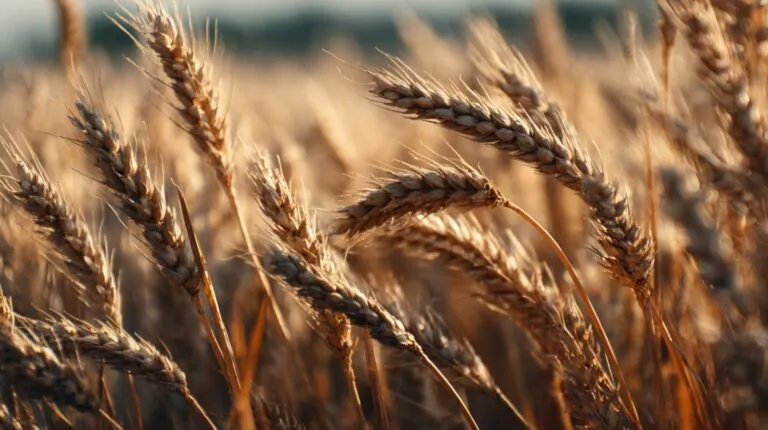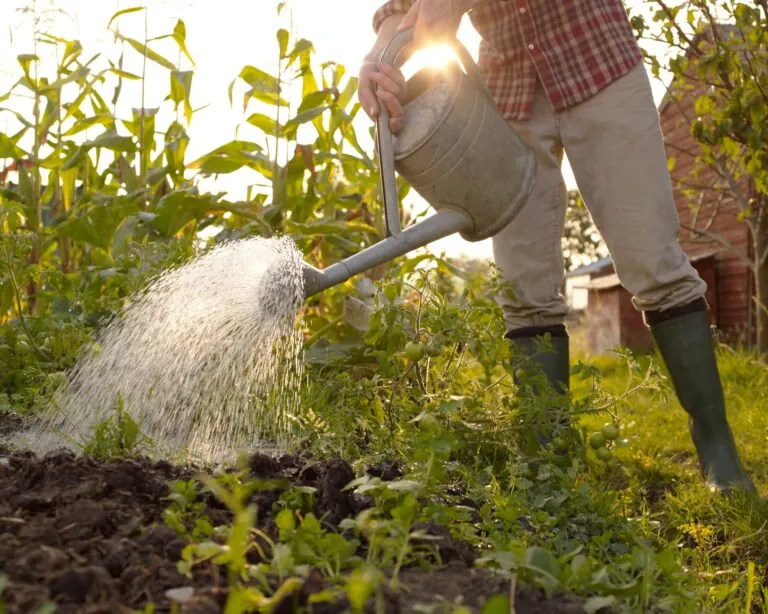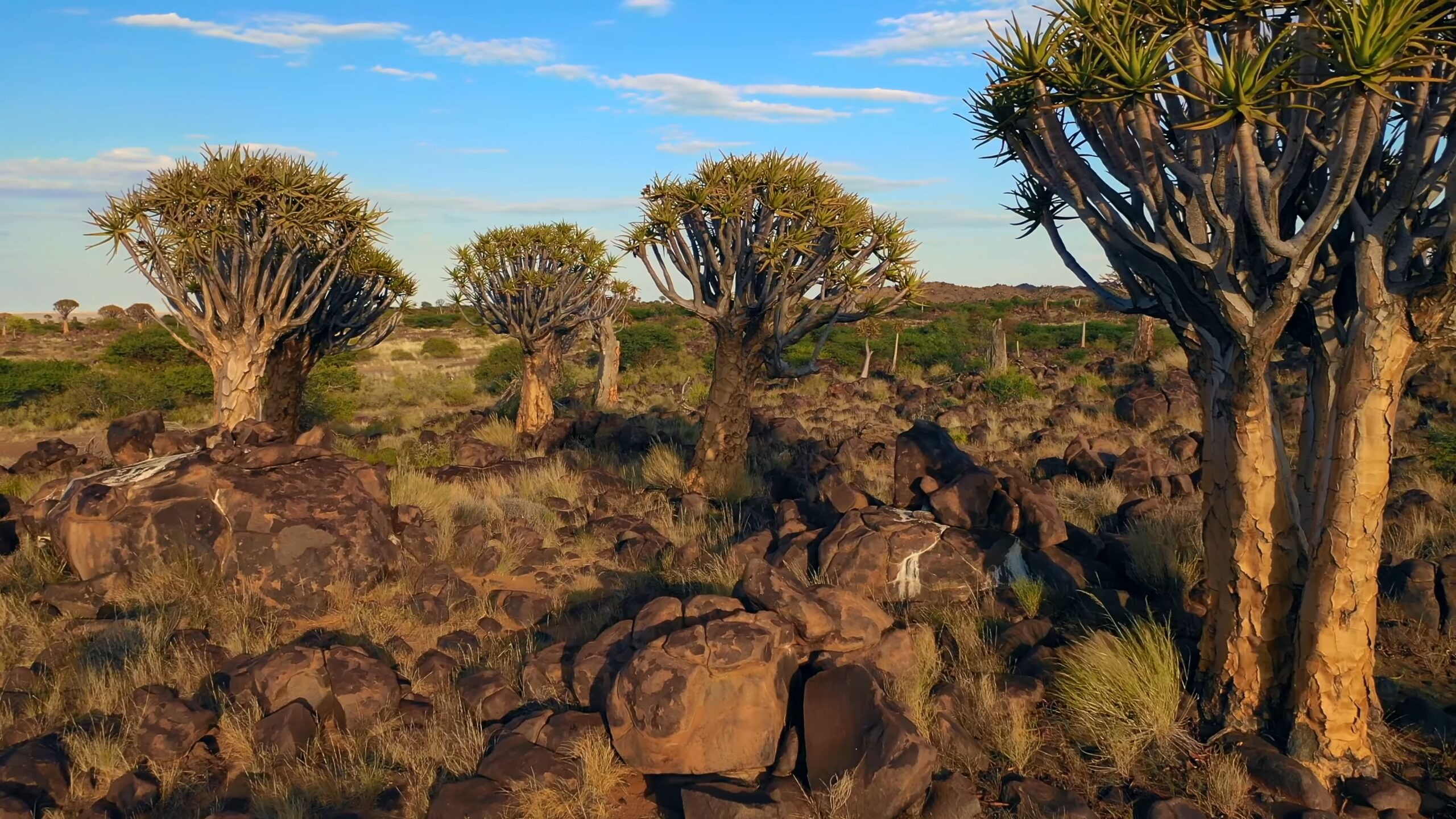Namibia – a land of contrast, where sweeping sand dunes give way to craggy mountaintops. Most wouldn’t think of this arid African wonderland as a hotspot for diverse tree life. However, if you’re willing to dig a bit deeper — both figuratively and literally — you’ll discover that Namibia is home to a fascinating array of native trees, each with its own unique story.
These are not just lumps of wood; they are ecological keystones, cultural cornerstones, and horticultural treasures all rolled into one. The Namib Desert might get the limelight for its breathtaking vistas, but today, we’re branching out (pun intended) to discuss Namibia’s equally awe-inspiring arboreal species. Whether you’re a casual nature lover, an ardent botanist, or just someone looking for an extra dose of eco-knowledge, strap yourself in.
This is going to be a very interesting ride! You might wonder why trees are such a big deal in a country primarily known for its deserts. These trees, my friends, are more than just silent sentinels. They offer nourishment and shelter to countless species, protect against soil erosion, and even contribute to local economies. And let’s not forget the important cultural and spiritual roles that some of these trees have played over the centuries.
1. Camel Thorn (Acacia erioloba)
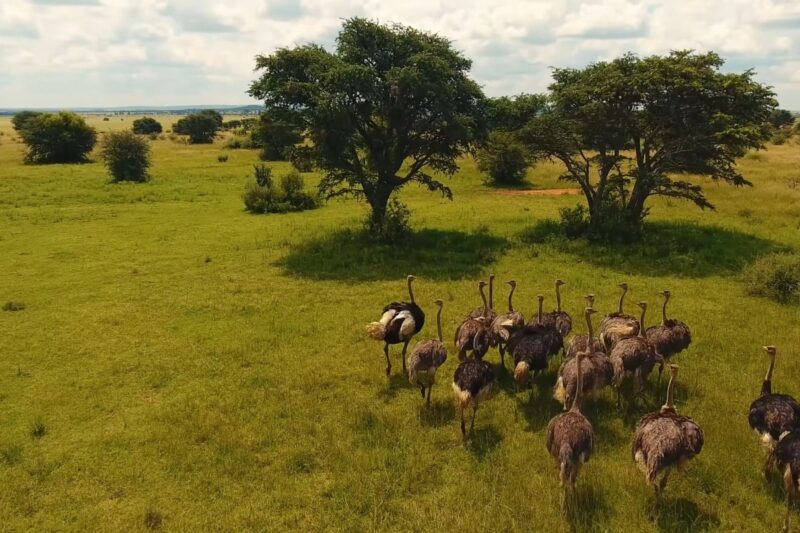
First up on our list is the mighty Camel Thorn, or Acacia erioloba, a tree so valuable that you might as well call it the Swiss Army knife of the Namibian flora. Primarily found in the drier parts of the country, this hardy tree can grow up to 18 meters high and is often a focal point of the ecosystem around it.
Environmental and Animal Impacts
- Food Source: Various animals depend on their seed pods for nourishment.
- Shelter: Birds often build their nests on the sturdy branches of this tree.
- Water: The roots can reach deep into the ground, tapping into underground water sources, benefiting both the tree and surrounding life.
Cultural Significance
Beyond its ecological roles, the Camel Thorn has a special place in the hearts of Namibia’s people. Its wood is highly sought-after for making furniture and tools, while the gum it secretes has traditional medicinal uses.
2. Mopane (Colophospermum mopane)
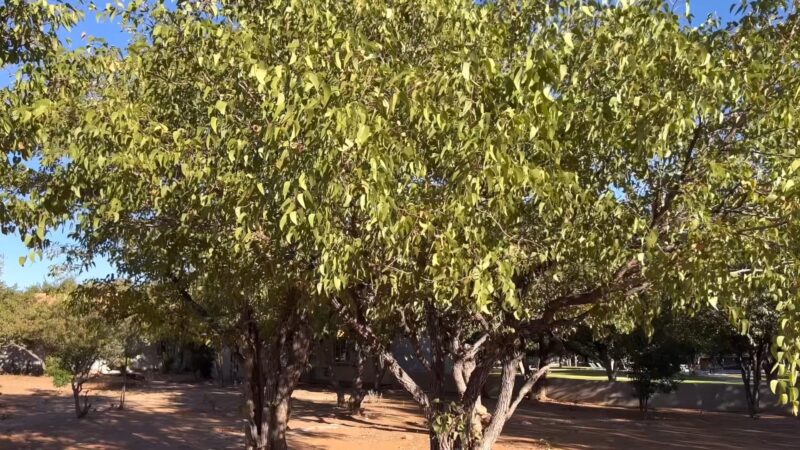
Next up is the fascinating Mopane tree, colloquially known as the “butterfly tree.” One look at its uniquely shaped leaves, and you’ll understand why. These leaves, resembling a butterfly’s wings, provide essential nutrients to various grazers, including elephants.
Ecosystem Synergy
- Leaf Litter: The leaves enrich the soil when they fall, making it fertile for other plant species.
- Termite Dynamics: Termites often build mounds using Mopane leaves, adding to the unique landscape.
Multi-Use Marvel
Mopane wood is highly durable, and its rich, reddish color makes it popular for crafting musical instruments and intricate carvings. Mopane worms, which feed on the leaves, are also a valuable protein source for many Namibians.
3. Leadwood (Combretum imberbe)
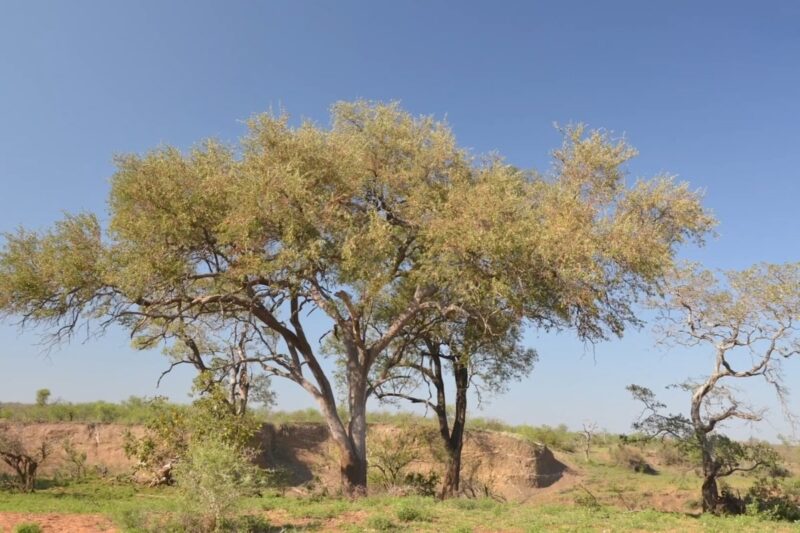
The Leadwood tree has an almost mythical reputation for its long-lasting wood that can endure for decades, even after the tree has died. Standing like silent sculptures, these deceased trees are an art piece in the very landscape they once nourished.
Flora and Fauna
Leadwoods provide a sanctuary for various types of lichen, which are a food source for many animals. The tree itself is resistant to termites, and its dense wood can be used as an efficient fuel.
A Sacred Tree
Leadwoods often serve as landmarks and meeting points for local communities. Due to its durability, the wood is also used for constructing kraals (livestock enclosures) and canoes.
4. Marula (Sclerocarya birrea)
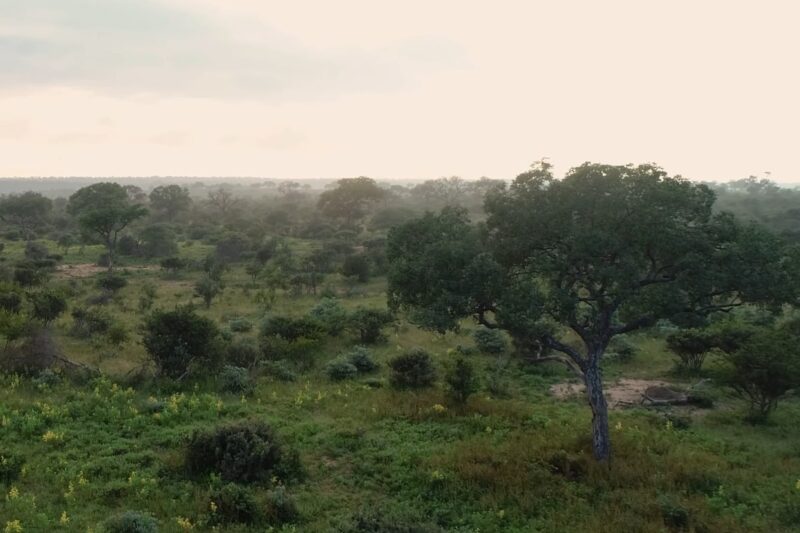
The Marula tree is perhaps best known for its juicy fruit, beloved not only by humans but also by elephants. This tree thrives in both wooded and open landscapes, adding a touch of lushness wherever it grows.
Medicinal and Cosmetic Uses
- Oil: The kernels yield rich oil that’s excellent for skin care.
- Juice: The fruit is high in Vitamin C and is often used to make beverages, including the famous Amarula liqueur.
A Social Catalyst
In many Namibian cultures, the Marula tree is considered a social tree under which meetings are held and decisions are made. It’s not just a tree; it’s a living emblem of community cohesion.
5. Quiver Tree (Aloidendron dichotomum)
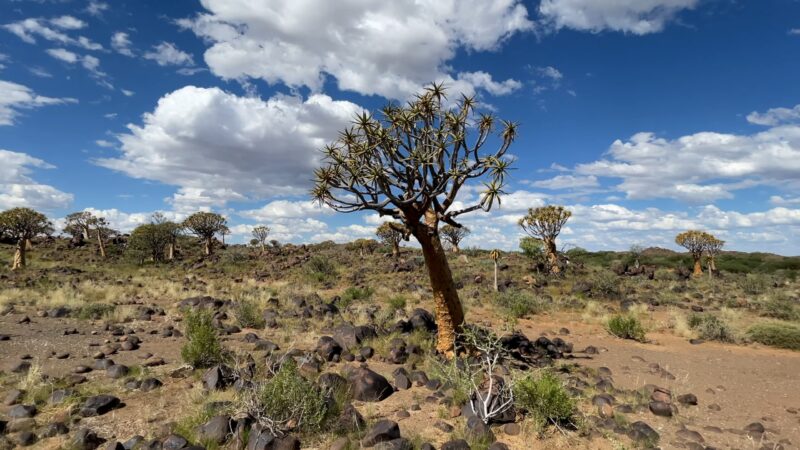
Renowned for its photogenic qualities, the Quiver Tree is not technically a tree but rather a giant aloe. The San people hollow out its branches to make quivers for their arrows, giving the tree its name.
Survival and Resilience
This species can store massive amounts of water in its fibrous tissue, allowing it to survive in extremely arid conditions. The yellow flowers attract a variety of pollinators, ensuring its propagation.
Art and Inspiration
The Quiver Tree has inspired countless photographers and artists, capturing the essence of Namibia’s stark yet stunning landscapes.
6. Shepherd’s Tree (Boscia albitrunca)
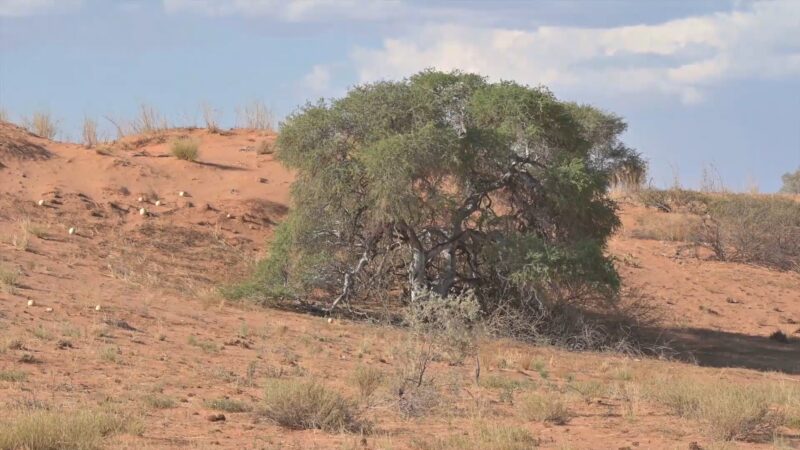
The Shepherd’s Tree, with its sparse but widespread canopy, often serves as a welcome respite from the relentless desert sun for both humans and animals. It prefers sandy soils and is commonly found in the Kalahari Desert.
Fodder and Forage
The leaves are a rich source of nutrition for animals. In fact, the Shepherd’s Tree has saved many a lost shepherd’s flock from starvation.
Traditional Uses
The roots and bark have been used for medicinal purposes, including as treatments for malaria and snake bites.
7. Makalani Palm (Hyphaene petersiana)
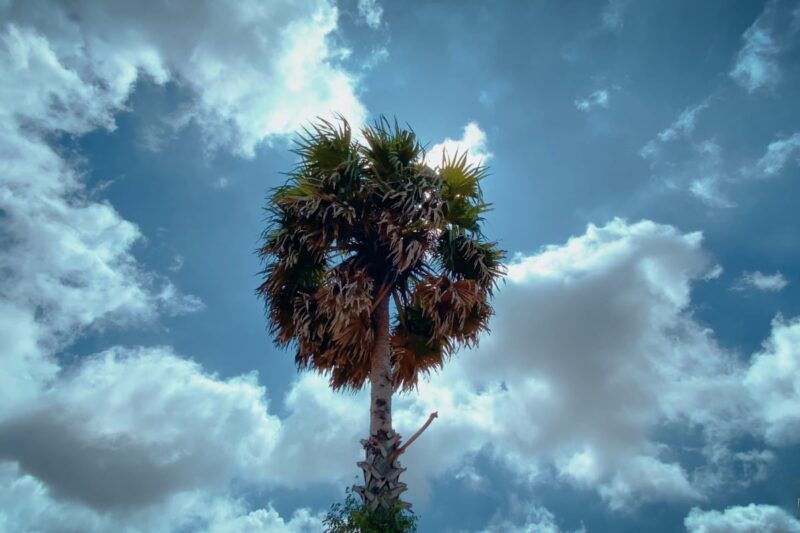
The Makalani Palm is the desert’s version of a tropical paradise, often growing near water sources and adding an exotic flavor to Namibia’s landscape.
Economic Significance
- Fruits: Also known as vegetable ivory, the hard seeds are used to craft ornaments.
- Leaves: The fronds are used for thatching roofs and making baskets.
Symbol of Life
In a harsh environment, the sight of a Makalani Palm often symbolizes hope and life. Its very presence indicates the availability of underground water.
8. Buffalo Thorn (Ziziphus mucronata)
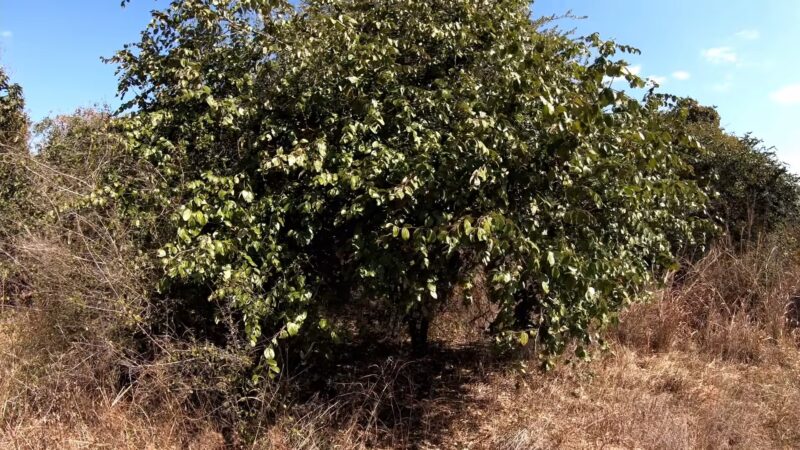
Last but not least, we have the Buffalo Thorn, a tree steeped in cultural and spiritual significance. It’s said that the zigzagging branches represent the twists and turns of life.
Biodiverse Support
The Buffalo Thorn is a key food source for both herbivores and omnivores. Birds feast on its berries, while animals like kudu munch on its leaves.
Spiritual Importance
In local customs, branches of the Buffalo Thorn are used in ceremonies to connect the world of the living with that of the ancestors. It serves as a symbol of continuity, linking past, present, and future.
9. Blackthorn (Acacia mellifera)
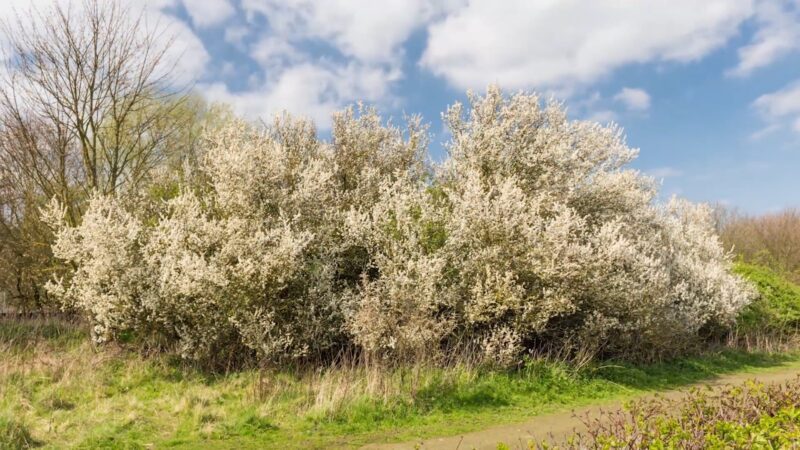
Don’t let the menacing thorns of the Blackthorn (Acacia mellifera) deter you. This tree is a remarkable specimen in the Namibian flora. It is one of the key species that form the natural bush enclosures seen in many regions of Namibia, providing a natural fence that protects other plant species from overgrazing.
A Symbiotic World
- Thorn Bushes: The thorny structure provides safe nesting spaces for small birds.
- Nitrogen Fixing: Like other acacias, the Blackthorn fixes nitrogen in the soil, enriching it for other plants.
Human Utility
The Blackthorn is valuable to local people for its gum, which has multiple uses, from adhesives to traditional medicines for treating coughs and colds. Its wood is hard and sturdy, making it ideal for crafting tools and farm implements.
10. Wild Teak (Pterocarpus angolensis)
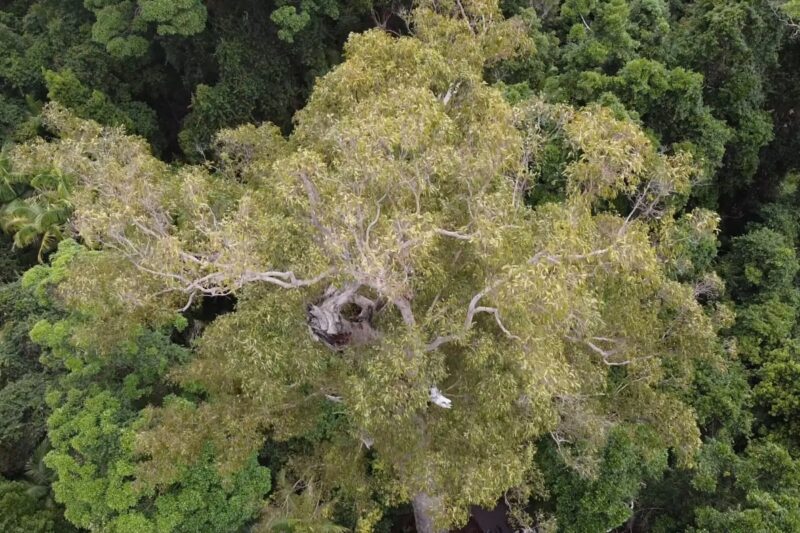
Wild Teak is a luxurious hardwood tree found in the woodlands of northern Namibia. Its rich, brownish-red timber is highly sought after in the furniture industry, both locally and internationally. The tree can grow up to 15 meters and has rough, scaly bark.
Conservation and Sustainability
- Slow Growth: Due to its slow growth rate, it’s vital to manage this resource sustainably to prevent overharvesting.
- Legal Regulations: Namibia has implemented guidelines for the harvesting of Wild Teak to ensure its long-term survival.
Cultural and Medicinal Importance
The Wild Teak isn’t just a pretty face. It has long been used in traditional Namibian medicine for treating a variety of ailments, from stomach problems to skin conditions. It also holds cultural importance in some communities as a spiritual protector, and pieces of its bark are often carried as talismans.
Final Words
And there you have it! Ten native trees that add untold layers of richness to Namibia’s already captivating landscape. Each tree is a microcosm of life, culture, and natural beauty, representing the incredible biodiversity that exists in this seemingly arid land. Whether you’re a traveler, a local, or just someone interested in the intricate web of life, I hope this guide has rooted a deeper appreciation for these majestic living pillars of Namibia in you.




